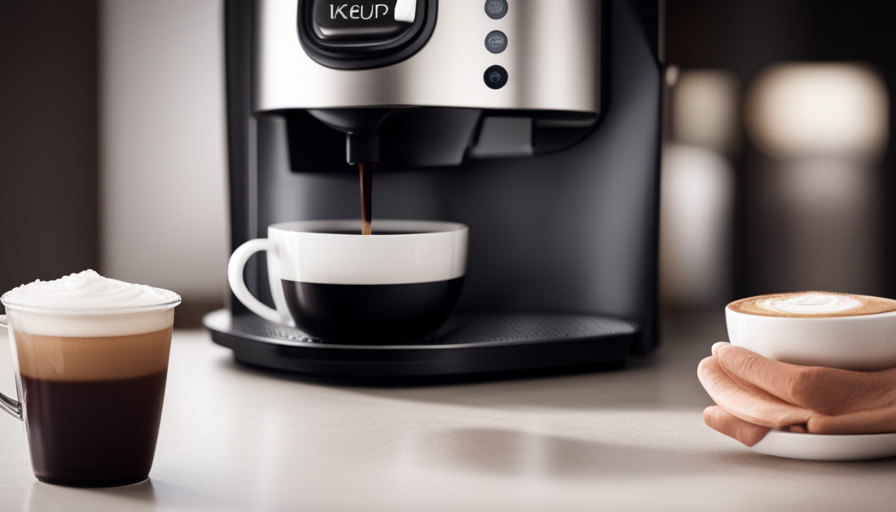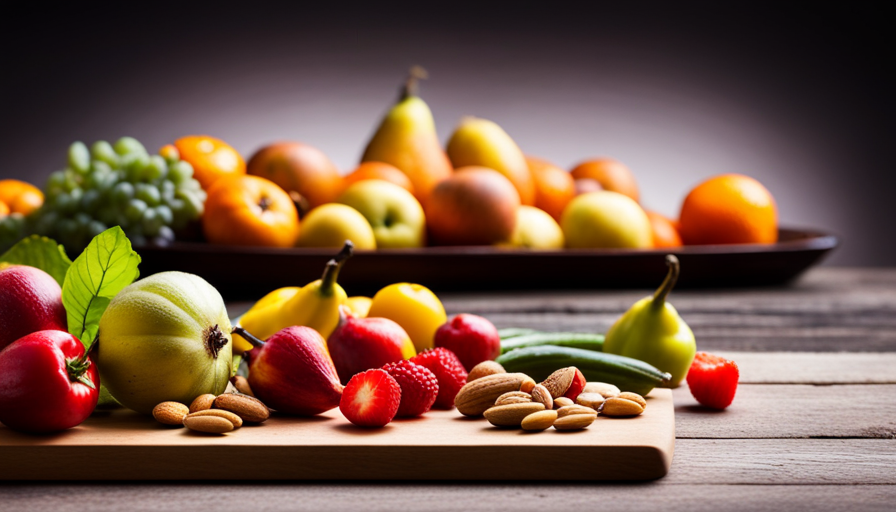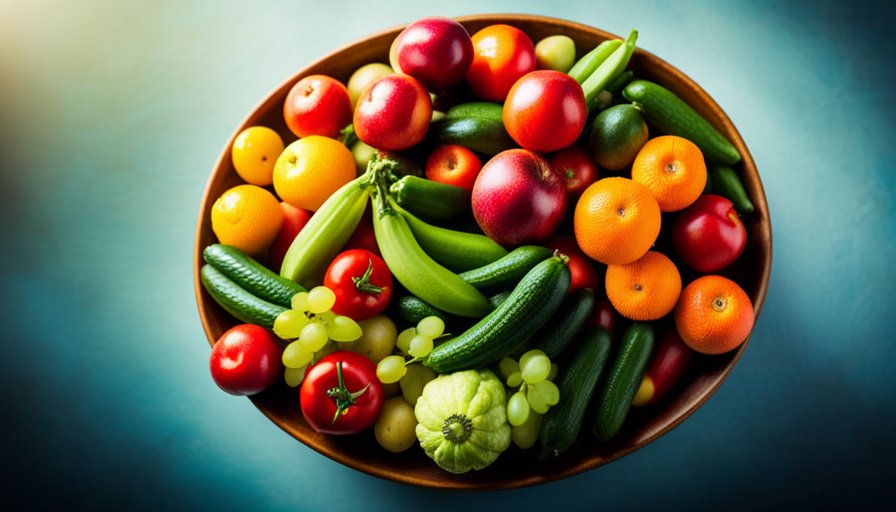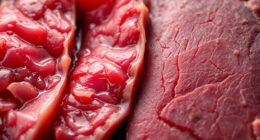The DeLonghi EMK6 Alicia Electric Moka Pot combines modernity with the traditional Italian coffee making technique. This advanced coffee maker offers convenience and portability, enabling coffee enthusiasts to savor the bold and rich flavors of a classic Moka pot without requiring a stovetop.
With its electric plug-in design and automatic shut-off feature, the Alicia offers a hassle-free brewing experience. The transparent container and durable aluminium boiler provide a glimpse into the brewing process, ensuring that the coffee is brewed to perfection every time.
Whether you prefer a strong brew with dark roasts or a balanced cup with medium roasts, the Alicia can cater to your preferences. While it may not offer the same level of espresso experience or cater to large groups, the Alicia Electric Moka Pot is a practical and convenient solution for those seeking a modern twist on the beloved Italian coffee makers.
Key Takeaways
- The DeLonghi EMK6 Alicia Electric Moka Pot is a modern take on the classic Italian coffee maker, offering convenience and portability.
- It can brew 6 cups of coffee and comes with a filter adapter for brewing 3 cups, making it suitable for different serving sizes.
- The coffee made with the Alicia is robust and full-bodied, best suited for medium or dark roasts.
- While it may not provide the same level of pressure as an espresso machine, the Alicia offers a practical and convenient solution for coffee lovers who want a moka pot experience.
How it Works
The DeLonghi EMK6 Alicia Electric Moka Pot operates by heating water in the aluminium boiler and forcing it through the coffee grounds in the filter basket, producing a robust and concentrated coffee similar to espresso.
The brewing process begins by adding water to the boiler and filling the filter basket with finely ground coffee. As the water heats up, it generates steam which creates pressure in the boiler. This pressure forces the hot water to rise up through a funnel and pass through the coffee grounds, extracting the flavors and oils.
The brewed coffee then collects in the upper chamber of the Moka Pot, ready to be poured and enjoyed.
Compared to the traditional stovetop method, the DeLonghi Alicia offers the convenience of an electric operation and an automatic shut-off feature, making it easier to use and reducing the risk of over-brewing or burning the coffee.
Features and Specifications
Featuring a transparent container for easy monitoring of the brewing process, the DeLonghi EMK6 Alicia Electric Moka Pot offers a convenient and user-friendly experience for coffee enthusiasts. With its modern twist on the classic Italian coffee maker, this electric moka pot provides several benefits and drawbacks compared to traditional stovetop moka pots.
Benefits of using an electric moka pot:
- Convenience: The Alicia Electric Moka Pot plugs in like an electric kettle, eliminating the need for a stovetop and providing a portable option for use in different rooms or while traveling.
- Automatic shut-off: This feature ensures safety by automatically turning off the pot once the coffee is brewed, preventing over-extraction or burning.
- Ease of use: The electric operation simplifies the brewing process, making it accessible even for beginners.
Drawbacks of using an electric moka pot:
- Lack of authenticity: Traditional stovetop moka pots provide a more authentic and traditional experience for coffee lovers who prefer the traditional method.
- Limited capacity: The Alicia Electric Moka Pot can brew up to 6 cups of coffee, which may not be ideal for larger groups of people compared to stovetop moka pots.
Overall, the DeLonghi EMK6 Alicia Electric Moka Pot combines modern convenience with the rich flavor of moka coffee, making it a practical choice for those seeking a convenient and user-friendly brewing experience. However, for those who prioritize authenticity and larger capacity, traditional stovetop moka pots may be more suitable options.
Alternative Options
One alternative option to the DeLonghi EMK6 Alicia Electric Moka Pot is the Bialetti Moka Express, which is a popular and widely used stovetop moka pot.
The Bialetti Moka Express is known for its traditional and authentic brewing method, which involves placing the pot on a stovetop and heating it until the water boils and creates pressure to force the water through the coffee grounds.
In comparison to the DeLonghi Alicia, the Bialetti Moka Express does not have the convenience of being electric and portable. However, it does offer the advantage of being more suitable for travel purposes, as it can be used on any heat source, including camping stoves and open fires.
Another advantage of the Bialetti Moka Express is its simplicity and durability. With its sturdy aluminum construction, it is built to last and withstand high heat. It also offers a wide range of sizes, allowing users to brew different quantities of coffee according to their needs.
Overall, while the DeLonghi Alicia offers the convenience of electric brewing, the Bialetti Moka Express provides a more traditional and versatile option for coffee enthusiasts, especially for those who prioritize travel-friendly features and durability.
Frequently Asked Questions
Can the DeLonghi EMK6 Alicia Electric Moka Pot be used to make other hot beverages besides coffee?
The DeLonghi EMK6 Alicia Electric Moka Pot can be used to make hot beverages other than coffee. While it is primarily designed for brewing coffee, it can also be used to prepare hot chocolate and tea. The moka pot’s electric functionality and transparent container make it versatile for different types of hot beverages. However, it is important to note that the moka pot’s brewing process is optimized for coffee, so the taste and flavor of hot chocolate and tea may differ from traditional preparation methods.
How long does it take for the DeLonghi Alicia to brew a full pot of coffee?
The brewing time for a full pot of coffee using the DeLonghi Alicia Electric Moka Pot may vary depending on factors such as the amount of water used and the desired coffee strength. On average, it takes approximately 5-10 minutes for the brewing process to complete.
The resulting coffee is robust and full-bodied, similar to a medium or dark roast.
The Alicia Electric Moka Pot offers a convenient and efficient way to brew coffee without the need for a traditional stovetop method.
Is the DeLonghi Alicia suitable for use with different types of coffee grounds, such as espresso or medium roast?
The DeLonghi Alicia Electric Moka Pot is suitable for use with different types of coffee grounds, including espresso or medium roast. The brewing technique for each type of coffee ground may vary slightly, but the Alicia is designed to extract the optimal flavors from both.
When brewing espresso grounds, the resulting coffee will have a bold and intense flavor profile. On the other hand, brewing medium roast coffee grounds will produce a smoother and more balanced cup of coffee.
Overall, the Alicia allows for versatility in brewing different types of coffee grounds, catering to individual preferences.
Can the DeLonghi Alicia be used with pre-ground coffee or does it require freshly ground beans?
Using pre-ground coffee in the Delonghi Alicia Electric Moka Pot has both pros and cons.
One advantage is convenience, as pre-ground coffee eliminates the need for grinding beans. However, the brewing process may be affected by the coffee grind size.
Finely ground coffee can result in a bitter taste, while coarsely ground coffee may not extract enough flavor. Freshly ground beans provide more control over the grind size, allowing for a better-tailored brewing experience.
Experimenting with different grind sizes can help achieve the desired flavor profile.
Does the DeLonghi Alicia come with a warranty or guarantee?
The DeLonghi EMK6 Alicia Electric Moka Pot does come with a warranty, providing peace of mind to the consumer. The specific details of the warranty, such as the duration and coverage, may vary depending on the region and retailer. However, DeLonghi is known for its commitment to durability and customer satisfaction.
In terms of maintenance, the Alicia is fairly easy to clean and maintain, although it is not dishwasher safe. Regular cleaning and proper care will ensure the longevity of the product.
How Does the Alicia Electric Moka Pot Compare to the Keurig K-Cafe All-In-One Coffee Maker?
The Keurig Kcafe review reveals that this all-in-one machine offers convenience with its K-Cup compatibility and milk frother. On the other hand, the Alicia Electric Moka Pot delivers a more traditional coffee brewing experience. Each has its own unique features, so it ultimately depends on personal preferences and brewing habits.
Conclusion
In conclusion, the DeLonghi EMK6 Alicia Electric Moka Pot offers a practical and convenient solution for coffee lovers who want a modern twist on traditional Italian coffee makers. Its electric plug-in design and automatic shut-off feature provide convenience and portability.
The robust and full-bodied coffee it produces is ideal for medium or dark roasts. While it may not provide a true espresso experience or be suitable for large groups, it offers good value for money and eliminates the need for coffee pods or expensive filters.
One potential objection could be the lack of dishwasher-safe feature, but the ease of use and maintenance make up for it.
Overall, the Alicia Electric Moka Pot is a reliable choice for those who appreciate the classic Italian coffee brewing method with a modern touch.










